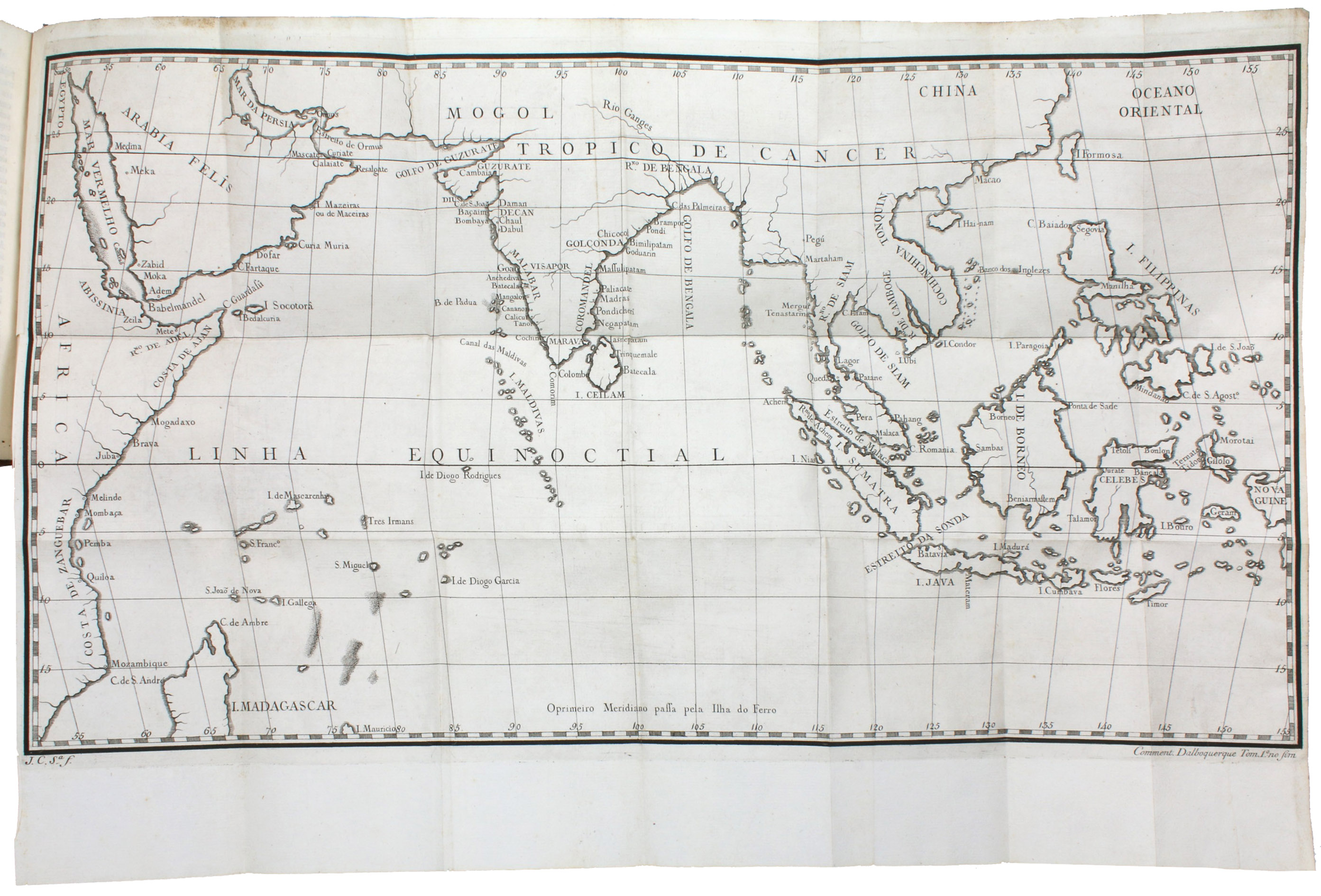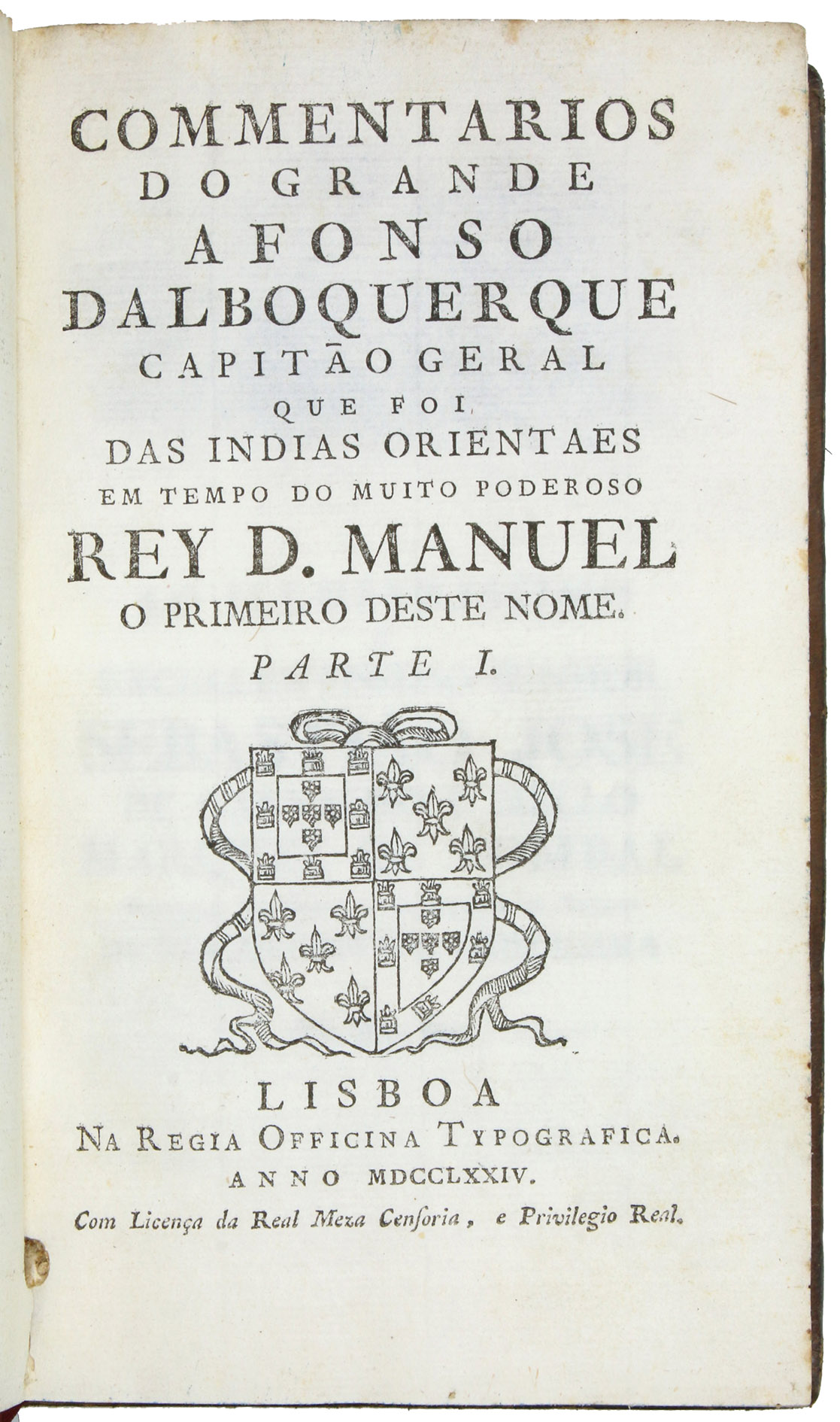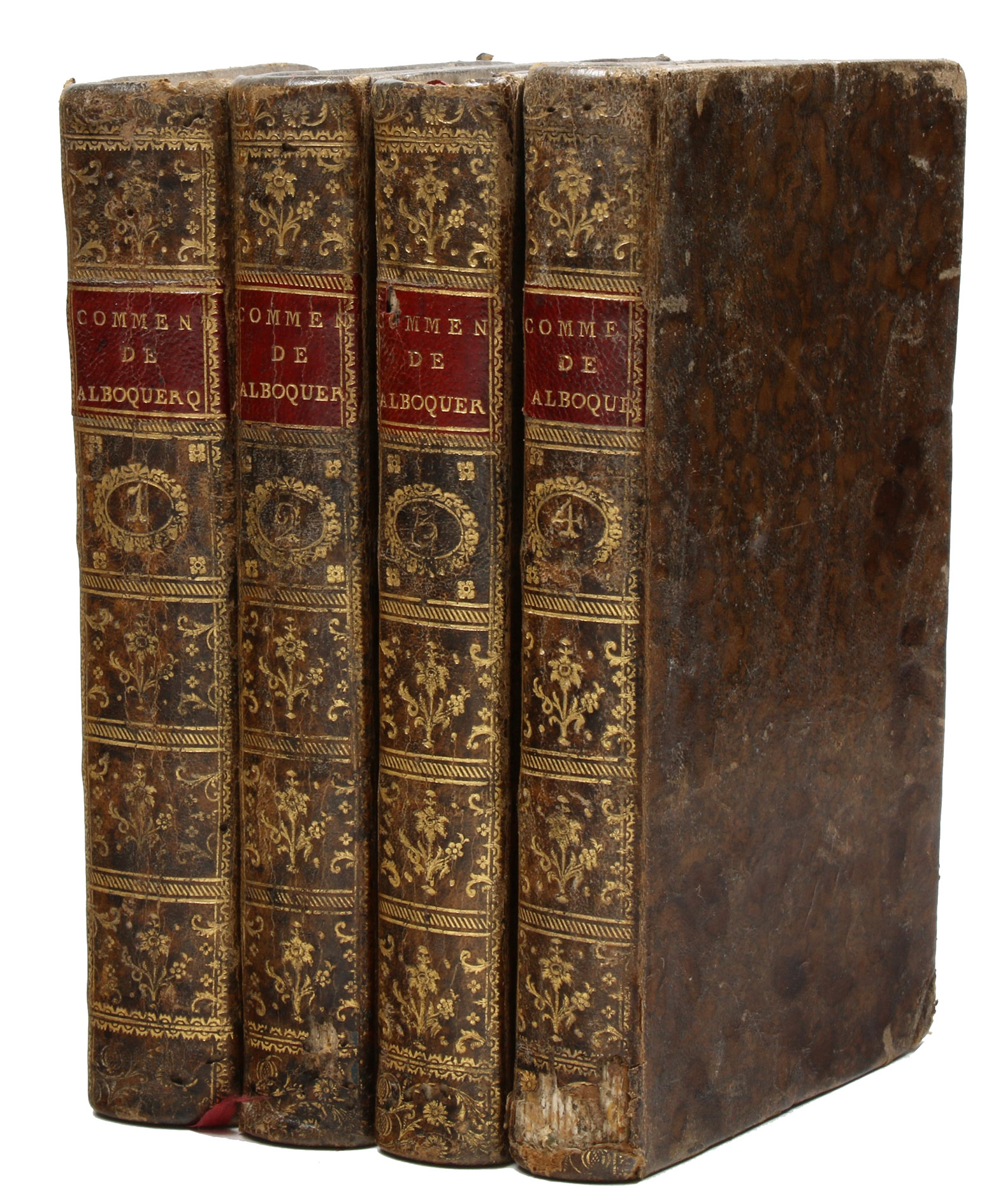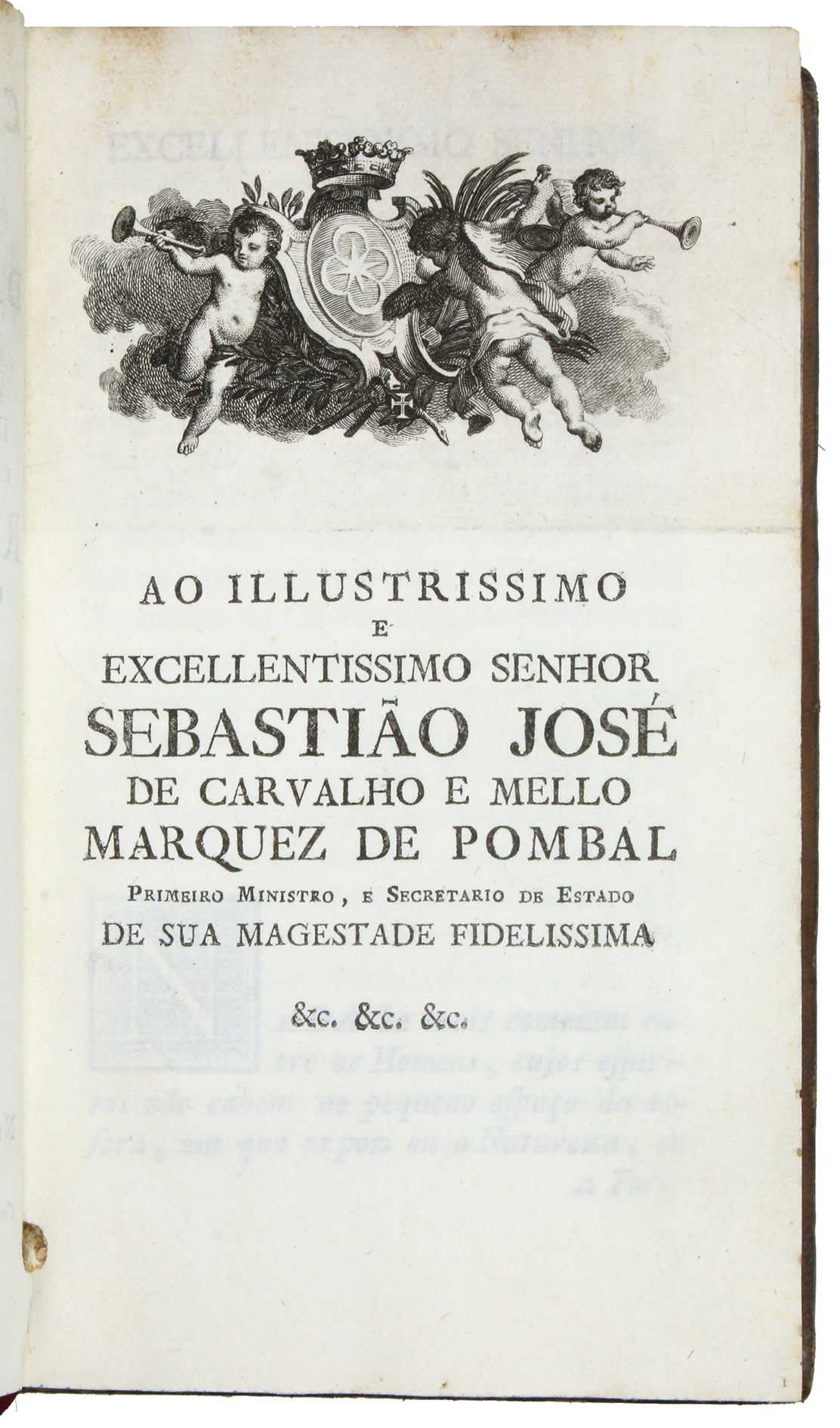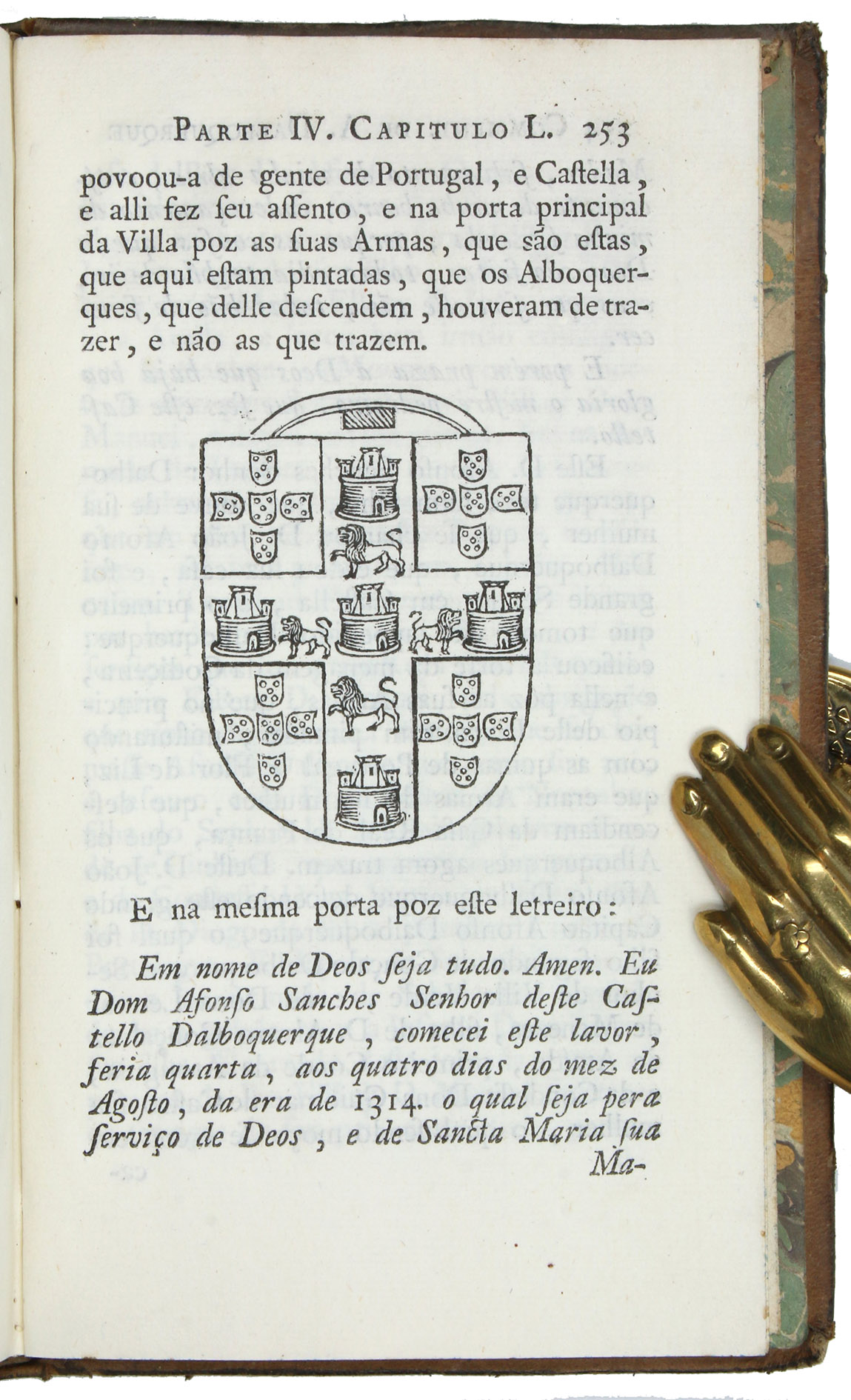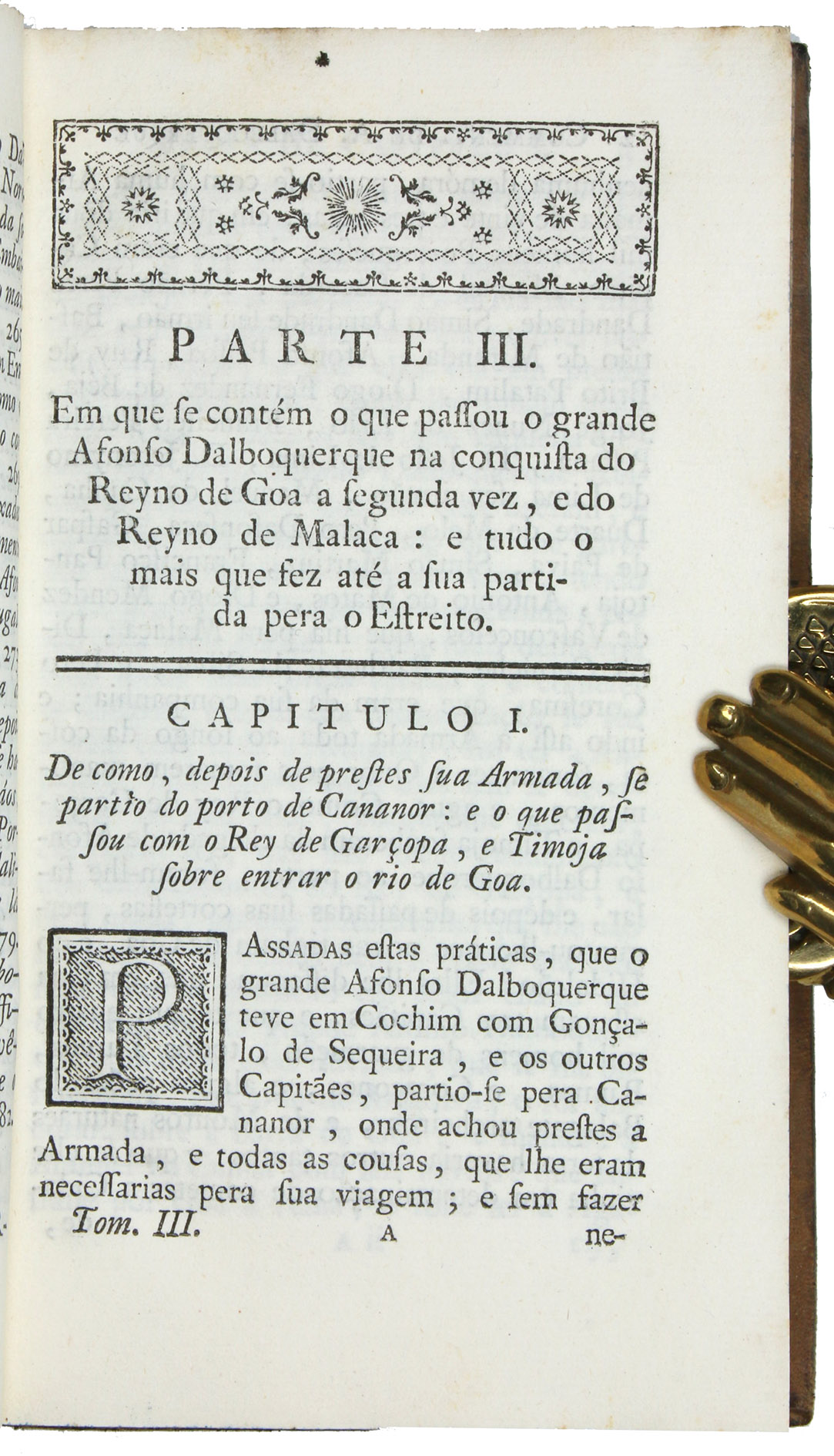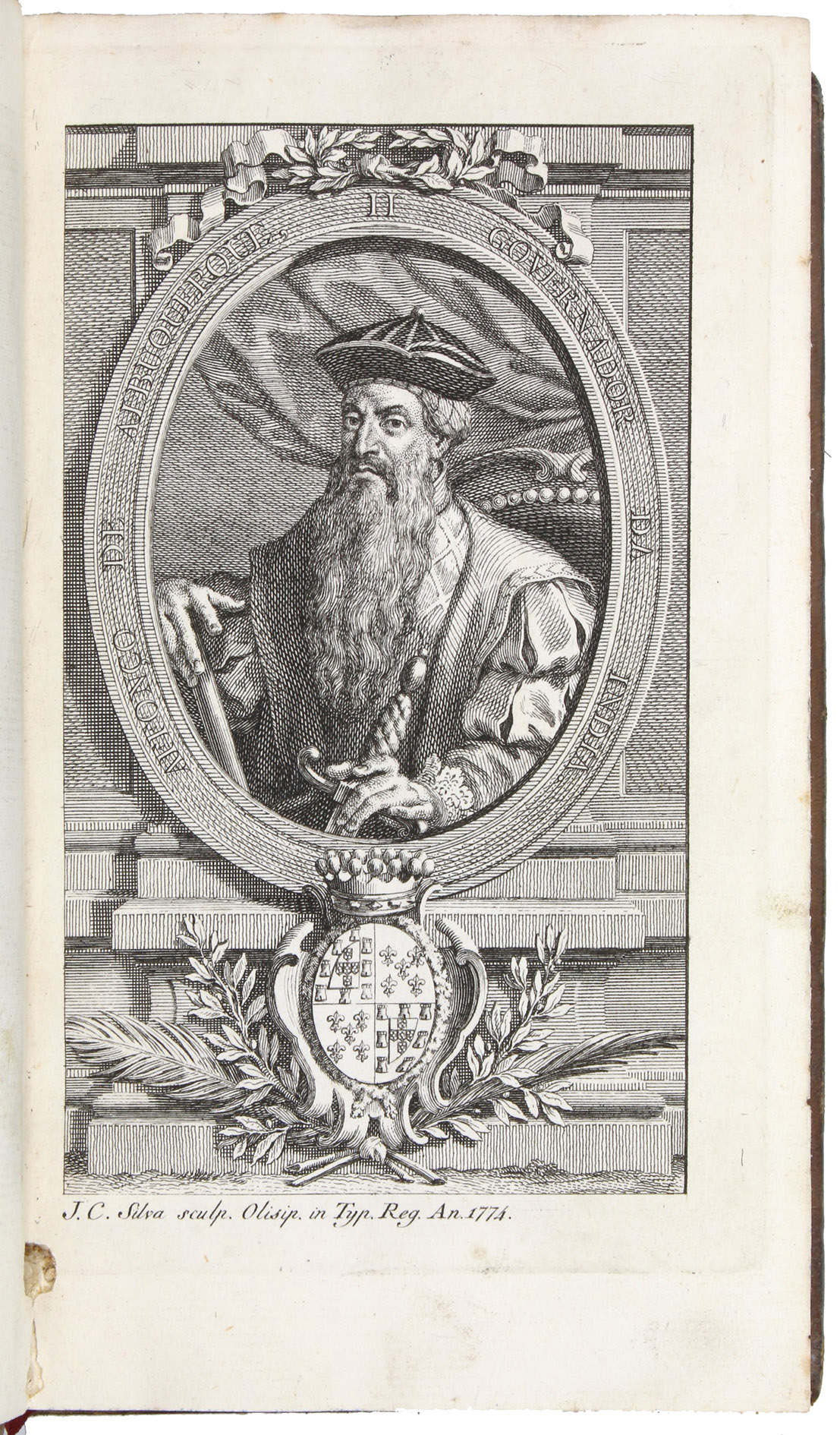ALBUQUERQUE, Alfonso de.
Commentarios do grande Afonso Dalboquerque capitao geral que foi das Indias orientaes em tempo do muito poderoso rey D. Manuel o primeiro deste nome.
Lisbon, Regia officina typografica, 1774. 4 volumes. Small 8vo. With a woodcut of Albuquerques coat of arms on all four title-pages, engraved portrait, an engraved illustration above the dedication, large engraved folding map and woodcut illustration in text. The map reaches from Egypt and Madagascar in the west to the Philippines and New Guinea in the east, including the Arabian Peninsula, the south of China, the east coast of Africa and most of the East Indies. Contemporary Portuguese mottled sheepskin with gold-tooled spines with red title labels, blue sprinkled edges, marbled endpapers. [6], XXX, [14], 343, [1]; [12], 285, [1], [2 blank]; [12], 289, [1], [2 blank]; [12], 256 pp.
€ 7,500
Attractive, complete set of the third and final edition of the "Commentarios" of the Portuguese admiral and second Viceroy of Portuguese India, Afonso de Albuquerque (ca. 1453-1515), remembered as "a great conqueror, and the real founder of the Portuguese empire in the Orient. Appointed head of the fleet of the Arabian and Persian sea in 1506, Albuquerque resolved to conquer the island of Hormuz, a great international market; the conquest would permit control of an important commercial route, while Hormozs treasure would provide the sums necessary to maintain Portuguese forces in the Indian Ocean" (Encyclopaedia Iranica).
The first volume contains his first and second visits to India and the successful attack on Hormuz. "In AD 1507, the balance of power and the ancient trading patterns of the Indian Ocean and the Gulf were permanently altered by the dramatic arrival of the Portuguese, under the ruthless command of Alfonso de Albuquerque [...] The famously wealthy kingdom of Hormuz, which controlled all the shipping lanes of the Gulf and also a significant slice of the Indian Ocean trade, was along with Aden and Malacca, a key target [...] The pearls of the region, and in particularly those of Bahrain, were already recognized as a chief objective. Prior to the conquest of Hormuz, Albuquerque sent a letter to his sovereign, King Manuel I, stating the following: Bahrain is rich and profitable; its Fishery of Pearls is easy to take over and improve. Once Hormuz is captured, Bahrain would be acquired and what is in the Sea of Persia" (Carter, Sea of Pearls).
The book was first published in 1557, compiled by the Captains son Bráz de Albuquerque (who, after the death of his father, assumed the name of Afonso) from the dispatches forwarded to King Dom Emmanuel.
From the collection of the U.S. conservationist Esmond Bradley Martin (1941-2018), long a U.N. special envoy for the conservation of rhinoceros.
Some worming to the spines with loss to the foot of vol 4; minor worming to margins of vols. 1 and 2. In general a clean example internally. A good set. Anselmo 222; BM-Portuguese Books 127; Brunet I, 145 ("Bonne edition"); Cat. Gulbenkian, Portugal & Persia, 126; Graesse I, 59 ("Derniere edition dun ouvrage tres important"); Henze I, 35ff; Howgego I, 21; Innocencio I, 7, 36; King Manuel No. 155; Palha 4136; Wilson 5; cf. Macro 29 (English 1875 ed. only).
Related Subjects:
